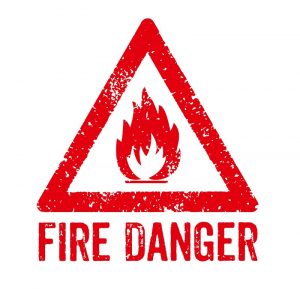Firestop services are a critical part of preventing disaster at your residential or commercial property. Think of your building as a series of fire-rated compartments that are all connected. Whenever there are minor or major connections between the compartments, like pipes or conduits, the fire rating and ability to resist the spread of fire decreases. Firestop services involve installing fireproof and fire-retardant materials in those small spaces to improve fire resistance ratings.
Firestop Systems 101
Penetration occurs whenever a pipe or other service component goes through a fire-rated barrier. If the hole or area surrounding the service component is not protected, the fire can quickly enter the neighboring space. Firestop is securely installed around the pipe or object so that smoke and fire cannot easily jump from area to area. Some people assume that caulk around the cable will do the trick, but if the barrier itself is not fire-rated, a fire-rated red caulk won’t make any difference!
Firestop systems, as a result, always start with a fire-rated barrier like a floor or a wall. Next, they focus on how to protect the opening and the objects entering it. All of the fire-rated and protection elements work together to prevent the spread of fire.
How is a Firestop System Evaluated?
Firestop systems are evaluated with thorough testing in accordance with building codes and national standards for firestop testing. Once your firestop system passes all of the tests, it will be awarded with an F and T rating. An F rating refers to how long, in hours, your firestop system can prevent a fire from spreading. A T rating is used to denote how well the firestop system cuts down on thermal conductivity. The T rating is the length of time needed for points on the other side of the firestop system to reach 163 degrees above the ambient room temperature.
Construction Safety and GPR Scanning from Concrete Visions
Concrete Visions has over 12 years of experience and expertise in concrete scanning and we know how to detect any problems lurking beneath the surface. We use ground penetrating radar accurately and expertly and are familiar in many other methods that can be used when appropriate like concrete x-ray and electromagnetic conductivity. We are also very familiar with the latest construction safety techniques and train all of our workers to do their work quickly, accurately, and safely. If you would like to learn more about how we can help you, give is a call at (410) 766-2210 or visit us online. For more articles and tips, follow us on Facebook, Twitter, LinkedIn, and Google+.

